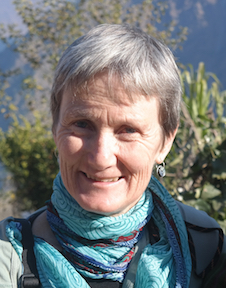The trend in the number of people first diagnosed with HIV in New Zealand, particularly amongst men who have sex with men, continues to decline from a peak in 2016.
Figures released today by the University of Otago HIV Epidemiology Group show 95 people were diagnosed with HIV in New Zealand in 2024 – similar to the number diagnosed in 2023.
While this number is higher than in the years impacted by the Covid-19 epidemic (2021 and 2022), it represents a decline from the annual average of 138 diagnoses over the preceding 2016 to 2020 period.

Group leader Dr Sue McAllister
Group leader Dr Sue McAllister says the downward trend is a credit to all the hard work being undertaken across the HIV and wider healthcare sector.
The National HIV Action Plan for Aotearoa New Zealand includes a 2030 target of 90 per cent reduction in locally acquired HIV infections compared with a 2010 baseline.
"Overall, to the end of 2024 there has been a 31 per cent reduction in locally acquired HIV infections since 2010 – the downward trend is promising, but vigilance is still required.
"It is important to continue the main HIV transmission prevention efforts – condom use; uptake and adherence to pre-exposure prophylaxis (PrEP); regular HIV testing; and testing for other sexually transmitted infections," she says.
Gay, bisexual, and other men who have sex with men (MSM) are the group most affected by HIV in New Zealand. Of the 95 people diagnosed in the country last year, 53 were MSM, 23 were heterosexually acquired (11 women and 12 men), and for 19 people the means of acquisition was reported as other or unknown.
Of those 53 MSM, whose ages ranged from 23 to 65 years, 38 were reported to have acquired HIV in New Zealand – which is a 46 per cent reduction compared with 2010. This reduction has been predominately seen in European MSM, whereas the number in other ethnic groups of MSM has either increased or stayed the same.
"In order to help decrease acquisition numbers it is important to ensure culturally appropriate prevention and testing services are available to men who have sex with men of all ethnicities," Dr McAllister says.
In men and women who were reported to have acquired HIV heterosexually, the numbers have remained small and relatively stable during the past 10 years.
The two children diagnosed with perinatally-acquired HIV in 2024 are the first cases born in New Zealand in over a decade. Ensuring access to HIV screening, treatment and care needs to be prioritised and strengthened to prevent any future perinatal transmissions.
There continued to be a large number of people living in New Zealand who were first diagnosed with HIV overseas (166), compared to an annual average of 58 per year over the five years from 2018 to 2022.
Dr McAllister says these were people mostly from countries in Asia, Africa, and Latin America. The majority (87 per cent) had an undetectable viral load indicating they are on antiretroviral therapy and therefore cannot pass HIV on sexually. People living with diagnosed HIV also made up less than 0.1 per cent of migrant arrivals in 2024.
"As always, it is important to remember that, with advances in treatment, people living with HIV can lead long and fulfilling lives."
HIV Epidemiology Group:
Funded by Manatū Hauora (Ministry of Health) to undertake epidemiological surveillance of HIV infection and AIDS in New Zealand, the group is based in the Department of Preventive and Social Medicine, Dunedin School of Medicine, University of Otago.






